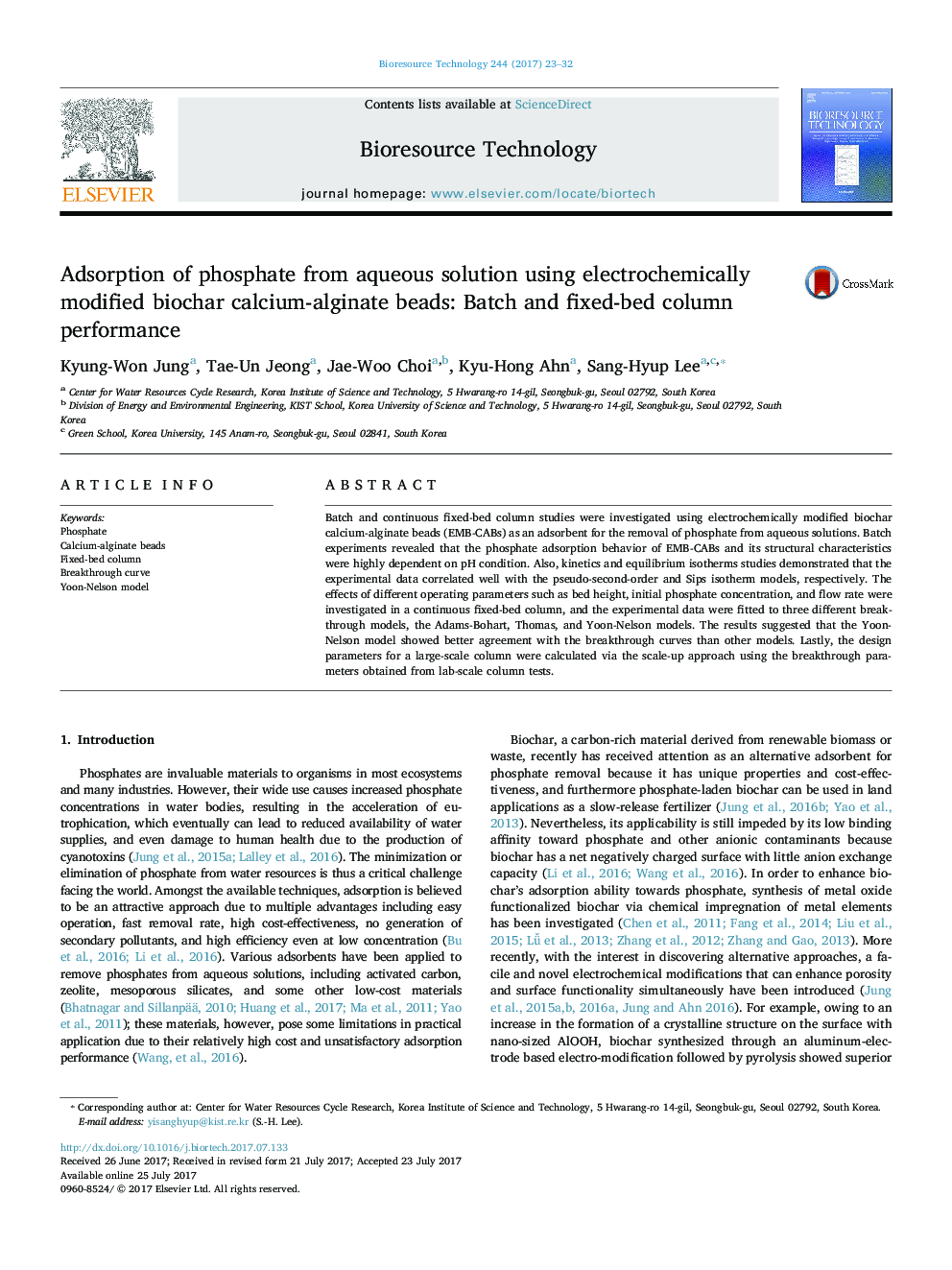| Article ID | Journal | Published Year | Pages | File Type |
|---|---|---|---|---|
| 4996515 | Bioresource Technology | 2017 | 10 Pages |
â¢Adsorptive removal of phosphate from water in batch and column modes was studied.â¢Electrochemically modified biochars has been converted into calcium-alginate beads.â¢Batch results indicate the endothermic and chemisorption process.â¢Column capacity was dependent on bed height, initial concentration, and flow rate.â¢The entire breakthrough curves were best predicted by the Yoon-Nelson model.
Batch and continuous fixed-bed column studies were investigated using electrochemically modified biochar calcium-alginate beads (EMB-CABs) as an adsorbent for the removal of phosphate from aqueous solutions. Batch experiments revealed that the phosphate adsorption behavior of EMB-CABs and its structural characteristics were highly dependent on pH condition. Also, kinetics and equilibrium isotherms studies demonstrated that the experimental data correlated well with the pseudo-second-order and Sips isotherm models, respectively. The effects of different operating parameters such as bed height, initial phosphate concentration, and flow rate were investigated in a continuous fixed-bed column, and the experimental data were fitted to three different breakthrough models, the Adams-Bohart, Thomas, and Yoon-Nelson models. The results suggested that the Yoon-Nelson model showed better agreement with the breakthrough curves than other models. Lastly, the design parameters for a large-scale column were calculated via the scale-up approach using the breakthrough parameters obtained from lab-scale column tests.
